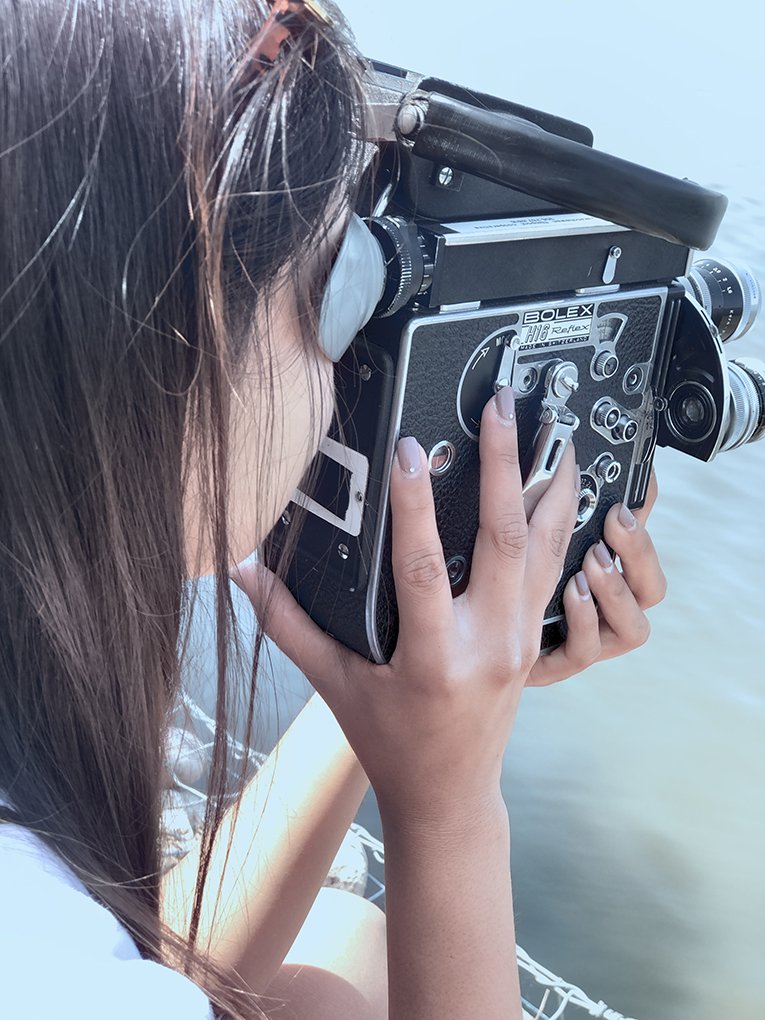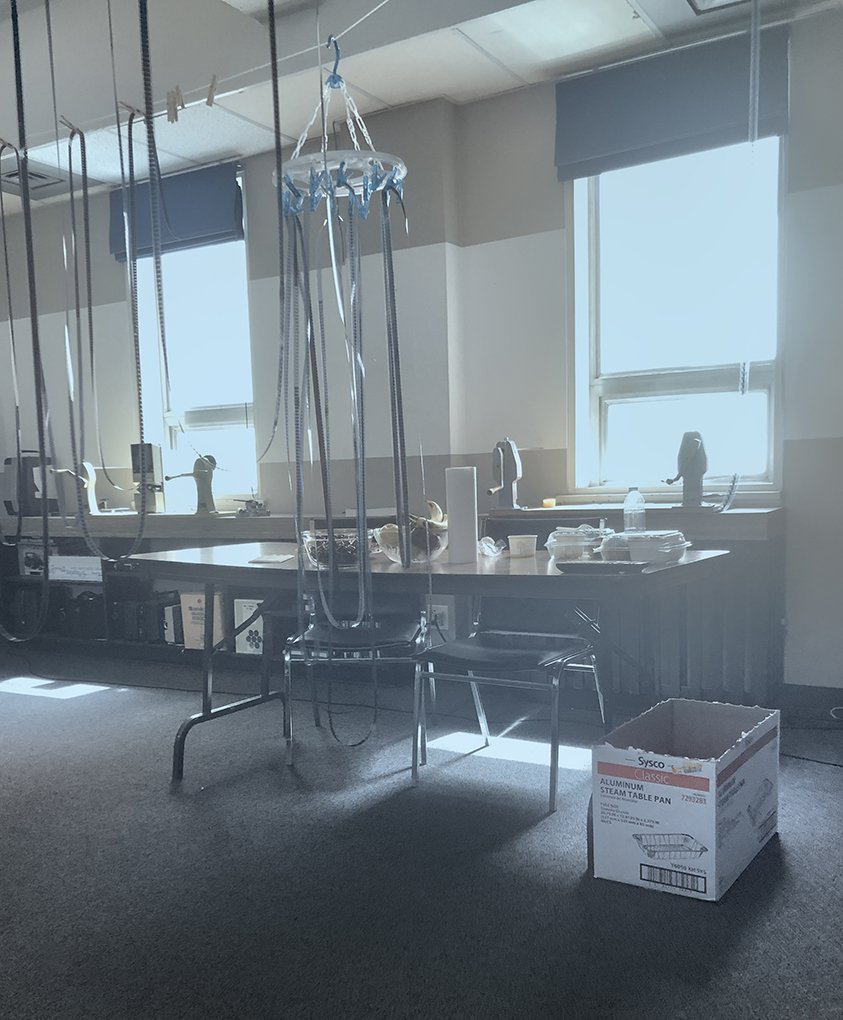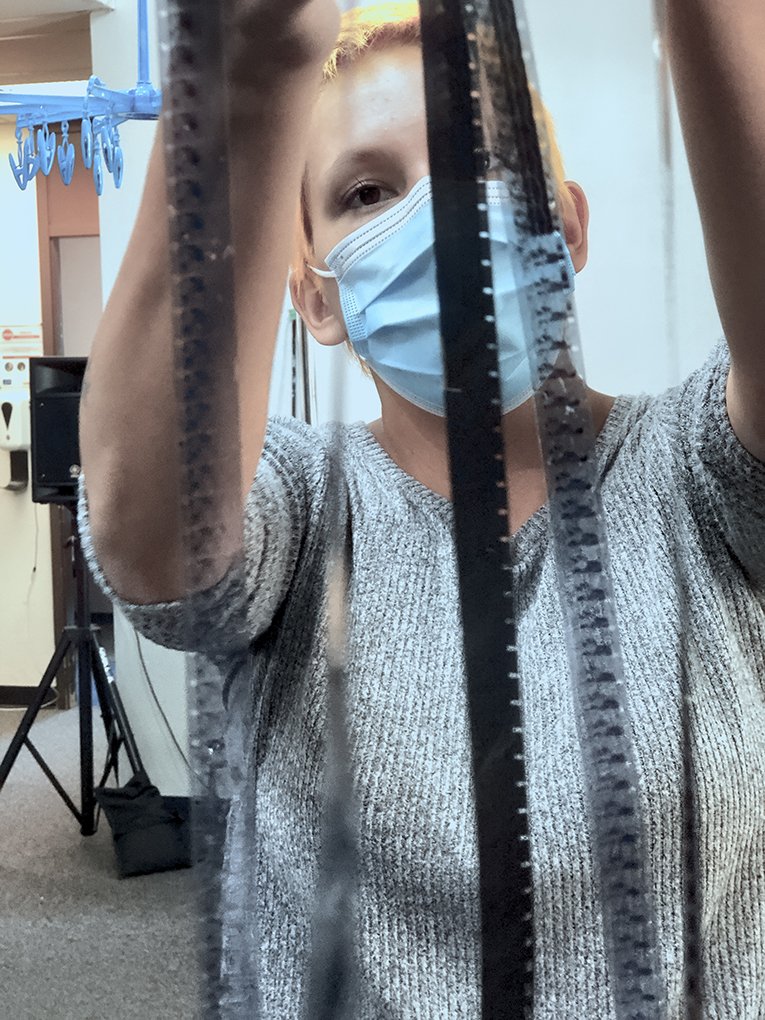Wascana Lab
Wascana Lab workshop at the Saskatchewan Filmpool Cooperative
Harbour Collective collaborates with Sâkêwêwak and the Saskatchewan Filmpool
By Esperanza Sanchez Espitia
Wascana Lab, an event organized by Indigenous media arts group Harbour Collective, visited Regina/Treaty 4 for a residency this past summer. Led by artists Jason Baerg and Paulete Poitras, the Visual Art Lab partnered with Sâkêwêwak and the Saskatchewan Filmpool to present visual art and experimental film labs from July 12 — 16. The Experimental Film Lab was led by filmmakers Cecilia Araneda and Penny McCann, an experimental film eco-lab, focused on the basics of 16 mm filmmaking, combined with emerging eco-approaches presented by filmmaker Elian Mikkola. Esperanza Sanchez Espitia interviewed Wascana Lab coordinator Liz Baron for Splice.
Who is Liz Barron? Please introduce yourself.
Greetings from Treaty One territory and homeland of the Métis, in Winnipeg, Manitoba. I’m a senior arts manager having worked in the sector for over 25 years. I’m one of three founders of Urban Shaman, a contemporary Indigenous artist-run centre in Winnipeg. Being in Winnipeg has allowed me to expand my areas of expertise, and includes music series and working with various musicians.
How was the idea of creating Harbour Collective born?
Three of us, Cecilia Araneda, Jason Baerg, and myself have long been colleagues through various associations, events, exhibitions, presentations and art practices. We had met again during a screening event in Toronto and thought that we should be working together to support creation and emerging and mid-career Indigenous artists.
Could you tell us about the process and challenges you encountered?
The biggest challenge has been the pandemic. We have a successful digital strategy fund grant that included in-person gatherings in four locations across Canada for researching the needs of Indigenous moving-image makers. Without travel, it’s been online and individual interviews and although we have content from our Indigenous moving image makers, the dynamic of meeting in person was missed.
What gives you the most satisfaction from being involved with Harbour Collective?
The most (satisfying) is being able to support Indigenous artists working in moving images and visual arts. The work produced from the Wascana residency in Regina is a testament to the commitment of the artists.
How did you begin your work as a film curator?
I was very fortunate to be involved with the National Indigenous Media Arts Coalition (NIMAC), and working with moving image makers. This was around the same time that two film festivals started: WNDX and Gimme Some Truth. NIMAC was invited to partner with the two festivals, and I was able to program Indigenous moving image makers for those festivals. It really was an inspiration to be able to be a part of those two festivals in their early days.
Do you have a process or a methodology in programming screenings?
Personally, I like to develop a curatorial statement. It can include an issue that is taking place within the Indigenous community, or in the public realm. I will research the issue and produce the curatorial statement and put a call for artists out. Receiving the films and developing the flow of the screening is key for the audiences. Currently, I’m doing research on two-spirits and two-spirit artists. I have an exhibition at PAVED in the winter 2021 with two-spirit new media artists and I’m seeking out other opportunities for that project.
Could you tell us how you started your involvement with the Regional Moving Lab?
When Harbour Collective was meeting, we wanted to focus on areas where Indigenous history and the impacts of Indigenous peoples took place. We knew that there are artists that don’t have access to artist-run centres and were producing work that was not being submitted to film festivals, or responding to calls for submissions for exhibition and presentation. We felt that as a collective, we could support those artists and help fill those missing gaps. Our LAB series also includes being by water and the impact of water within the Indigenous landscape. Meech Lake and Wascana were our first two LAB series and as we move forward, we are searching for partners in regions that have an impact on Indigenous artists and are at or by water.
What effect has COVID-19 had on your work?
Covid-19 was a hard hit for sure. The changes in restrictions across the country had a direct impact on my work. There were some territories that had mandatory two-week isolation upon arrival and then, returning to Manitoba, there was a two-week isolation. It’s not possible to have a month of isolation and be able to produce work. Other provinces had border closures not allowing travel at all.
What is your role in the different Labs?
I act as the project manager for the LAB series. Securing partnerships and venues, contributions from our partners, facilitators and contracts, calls for submissions from artists, all the work around getting the project moving forward and then, delivery of the project and all the necessary financial reporting.
What were your impressions of Regina before and after the Labs?
It was the first time I stayed in Regina. I’ve always driven through, but have not had an opportunity to stay. I would have liked to stay longer and been able to visit all the galleries and museums. With the pandemic and restrictions on numbers in spaces, it was a challenge to coordinate times and such.
What has been your connection with Saskatchewan Filmpool Cooperative?
Sask Filmpool was wonderful to partner with. The staff was amazing and working with the team there was great. They had all the necessary equipment and also gave us a great lead for an additional instructor. The participants received a membership to Sask Filmpool, and that opportunity can continue the artists development in creating new work.
We also partnered with Sâkêwêwak. Their Director (Holly Aubichon) was helpful and provided us with a space and included an exhibition within their Storytellers Festival, to be held in February. It’s a key element in our partnerships that the artists’ works also produced (presented).
What were the criteria for selecting the participants?
We did a call for submissions with artists that were looking at experimental (work) and being able to create film with hand processing. The artists were to have at least made one film, and have or will have an art practice in filmmaking. The visual artists were a mix of traditional and contemporary, and with our artist facilitators, it was a great mix. The work produced in the visual arts incorporated both styles of practice with traditional beading practice and contemporary work.
What were the criteria for selecting the lab film and art visual instructors?
Our instructors are from our network. With over twenty years in the sector, there is a deep knowledge of artists that would be engaging in a workshop environment. For the specific fields of practice that our LABS have, whether visual art or moving image, we focus on those within our network that have an art practice and have a body of work that can be used for the LABs.
What’s next after Wascana Lab in Regina?
After Regina, we are in Meech Lake, QC. The QC LAB is different in that the artists are all staying together in a cabin on Meech Lake for seven days. The instructors are coming in from Ottawa on a daily basis. For 2022, we are looking to the east coast for two projects.
How could you describe your experience in Regina?
It was like being in 2019. Masks were not mandatory; people were out and about. It was a culture shock after being in lockdown for most of 2020 and 2021 in Manitoba. Our partners with Sask Filmpool and Sâkêwêwak were great and made us feel welcome and supported.
What did you get from this experience personally?
The final presentations of the work created were the greatest joy of the series. It was amazing to see the films created and the visual art presentation.
Esperanza Sanchez Espitia is a Regina- based storyteller and filmmaker. She has an international background as an Indigenous photojournalist. Esperanza’s work is primarily focused on defending Indigenous Ancestral Culture.




